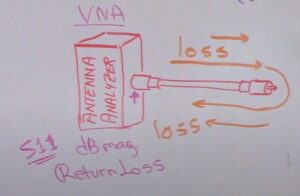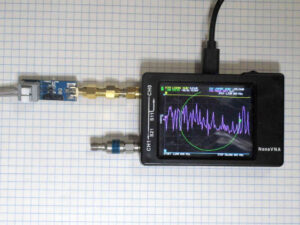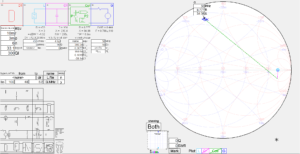On testing coax cable loss with an analyser / VNA – part 2 gave a method of approximating the matched line loss (MLL) of a section of transmission line based on measurements of ReturnLoss with the section terminated in both an open circuit and short circuit. The article demonstrated the method using TLLC to provide expected measurement values.
So, does it work in practice?
Let’s measure a 10m length of Belden 8267 (RG-213) fitted with N connectors using a Rigexpert AA-600 and an instrument grade N(F) short circuit.
ReturnLoss @ 3.5MHz is 0.15dB. Continue reading On testing coax cable loss with an analyser / VNA – part 3







